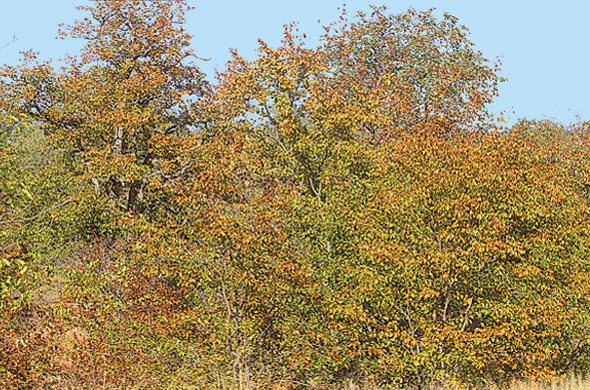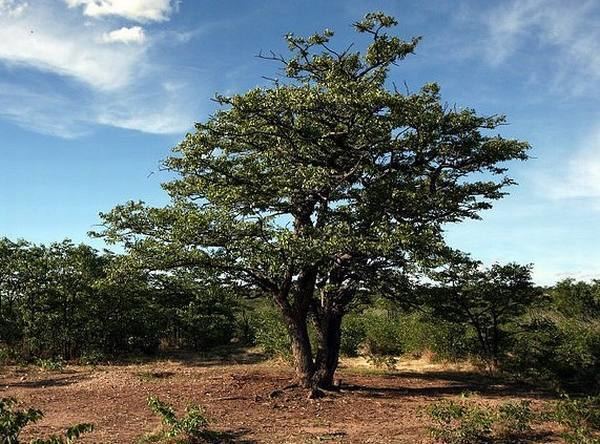Scientific name Colophospermum mopane Rank Species | Higher classification Colophospermum | |
 | ||
Genus ColophospermumKirk ex J.Léonard Similar Combretum, Combretum imberbe, Brachystegia, Gonimbrasia, Vachellia erioloba | ||
Colophospermum mopane, commonly called mopane, mophane, mopani, balsam tree, butterfly tree, or turpentine tree, is a tree in the legume family (Fabaceae), that grows in hot, dry, low-lying areas, 200 to 1,150 metres (660 to 3,770 ft) in elevation, in the far northern parts of southern Africa. The tree only occurs in Africa and is the only species in genus Colophospermum. Its distinctive butterfly-shaped (bifoliate) leaf and thin seed pod make it easy to identify. In terms of human use it is, together with camel thorn and leadwood, one of the three regionally important firewood trees.
Contents

Range and habit

It is native to Botswana, South Africa, Zimbabwe, Mozambique, Zambia, Namibia, Angola and Malawi. It is found growing in alkaline (high lime content) soils which are shallow and not well drained. It also grows in alluvial soils (soil deposited by rivers). In small portions of South Africa and larger adjacent areas of Botswana and Zimbabwe, the trees tend to vary between 4 and 18 m (13 and 59 ft), often called "mopane scrub" (shrub) but also sometimes taller and forming woodland, where further north the trees are taller and form tall woodlands referred to as cathedral mopane. This tree does not grow well outside hot, frost-free areas with summer rainfall.
Uses
Mopane wood is one of southern Africa's heaviest and is difficult to work because of its hardness. However, this also makes it termite resistant. For this reason it has long been used for building houses and fences, as railway sleepers and as pit props. The termite-resistance and rich, reddish colouring also make it popular for flooring. Outside Africa, mopane is gaining popularity as a heavy, decorative wood, its uses including aquarium ornaments, bases for lamps or sculptures, and garden accents.

It is also increasingly being used in the construction of musical instruments, particularly woodwind. Suitable quality African blackwood (Dalbergia melanoxylon), traditionally used for clarinets, is becoming harder to find. Mopane is fairly oily, seasons very well with few splits or shakes, and produces instruments of a warm, rich tone.
Mopane twigs have been traditionally used as tooth brushes, bark to make twine and for tanning, and leaves for healing wounds. The wood is also used to make charcoal and for braai wood.
The tree is a major food source for the mopane worm, the caterpillar of the moth Gonimbrasia belina. The caterpillars are rich in protein and are eaten by people. The tree also acts as a foodplant for a wild silk moth, Gonometa rufobrunnea. Cocoons of the moth are harvested as wild silk, to make cloth.
The mopane tree also serves as a host plant for the mopane psyllid Retroacizzia mopani.
Etymology
Colophospermum is Greek for "oily seed", in reference to the resinous seed (i.e. spermum) which has a turpentine smell. Colophon was the birthplace of Homer in Ionia, and was famous for its rosin, a substance obtained from turpentine or the gummy exudate of some trees. The species name mopane is taken from the local name for the tree.
